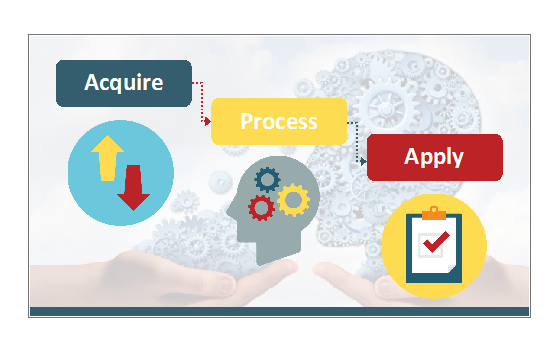ATD Blog
To Engage the Modern Learner, Start With Why
Mon Jan 08 2018


As talent development professionals, we are very good at proving what people need to learn, and designing how they will learn, but do we do enough to explain why learning is necessary?
Many of you may be familiar with Simon Sinek’s “Start with Why” TED Talk—if not, I encourage you to watch it, as it transformed the way in which I think about a lot of the challenges that we face in learning today. In the talk, Sinek speaks about how companies like Apple do a fantastic job of demonstrating why consumers want and need their products, so that people wait in line for hours to be the first to buy the latest i-device.
Wouldn’t it be great if we can harness just a fraction of that enthusiasm and motivation from our learners with our learning? We do a great job of telling the learner what they will learn from our offering—consider any set of learning objectives that you set for your programs. The “how” is determined by the modalities, activities, and tasks that we ask them to perform. But how often do we really get down to the “why?”
Why will this training course change what you do in your job role? Why should you want to attend and pay attention? Why is the pre-work necessary?
So far, the main way we give answers to these questions is by providing learning outcomes, but those generally provide the “why” from a business perspective rather than a personal perspective.
Consider Being a “Learning Architect”
Many of our learners (and us as learning professionals) often view face-to-face training as being the best approach to learning, with virtual classrooms and e-learning being second and third best, respectively. However, Ruth Clark, in her book Evidence-Based Training Methods, has demonstrated that no method of delivering training has any significant advantage over another.
We should be looking at creating the best blended learning experience that we can offer our learners—one that delivers the information (and its intended outcomes) in the best possible way, not just the most convenient or least expensive.
If you think about how an architect designs a new building, their approach is not to build using just one type of material, but to select the right materials for the job, whether for strength, light, structure, or aesthetics, and blend them to create their project. Sometimes the building is intended to be a functional building, and other times they can perhaps be more extravagant and create a masterpiece—but every time, careful thought, planning, and preparation has gone into selection of materials.
We have become learning architects even if we have not thought of ourselves in that way—we specify the various methods and modalities we are going to use to build our learning journeys, not relying on just one material or method. But when you become aware of this, you can become more creative with your blends.
The advent of the LMS and other learning portals has allowed us a canvas upon which we can create our masterpieces. What’s more, providing a learning journey can map out the various steps we need our learners to take, but do we just provide the “what” and “how,” and leave the “why” to chance?
Even when the learner is working independently, are we addressing the “why” for them? Are we giving clear signposts as to why they need to complete the pre-work (“please watch this short video on the Thomas Kilman Model, as you will be conducting a role play with your colleagues in module 4”)?
With blended learning and a transparent architecture, there is very little chance learners will avoid completing the pre-work, because they see why it’s important that they do it—it’s all laid out in the plan.
Don’t Spend Too Much Time Providing Knowledge Live
In your live training events (whether they’re face-to-face or virtual), are you spending large proportions of your time helping the learner acquire knowledge? Is presenting or lecturing about something a good use of your live time together, or is there another way?
In a recent webinar that I conducted, I asked the group of L&D professionals, “Do you think we spend too much time in our live events helping the learner acquire knowledge?” Seventy-eight percent of that audience responded that they do.
There are other, far better and far more efficient ways for us to help learners acquire that knowledge than presenting it live in your event.

Instead, support learners to acquire, process, and apply knowledge. To be truly effective and successful in learning, we need to create learning courses that allow the learner to acquire knowledge (whether that is new or enhancing what they already know), to process that knowledge (using role plays, case studies, or scenarios that test the knowledge being gained), and provide ways to support the learner being able to apply that knowledge in their role.
Our approach to how we do that will depend on three key factors:
Is the knowledge “need to know” or “nice to know”? This helps us determine if that should be called out more in the learning course or provided as a resource post-event.
What is the complexity of the knowledge? For knowledge acquisition that needs facilitator support, a live event is still the best choice, while less complex information can be served up using self-paced tools such as videos or e-learning.
Do we need collaboration? Is there information that is best learned in a group environment, with input from peers? Again, think about the best use of everyone’s time—and in the process, you’ll be connecting back into their WIIFM (what’s in it for me) by designing learning experiences that respect their time.
Engaging the Modern Learner Is Making the Process Learner-Centric
Setting the correct climate for our learners and designing learning that supports them, allows learners to really engage with what they’re meant to learn, and ultimately provides pace and time for learning transfer to take place, are all parts of making learning more learner centric.
Go ahead and truly engage the modern learner—it will pay dividends in the long run!
